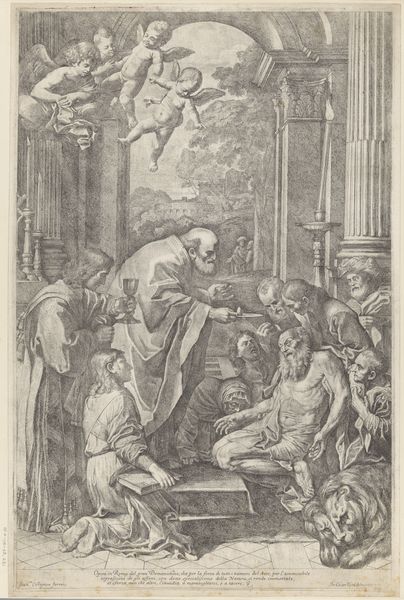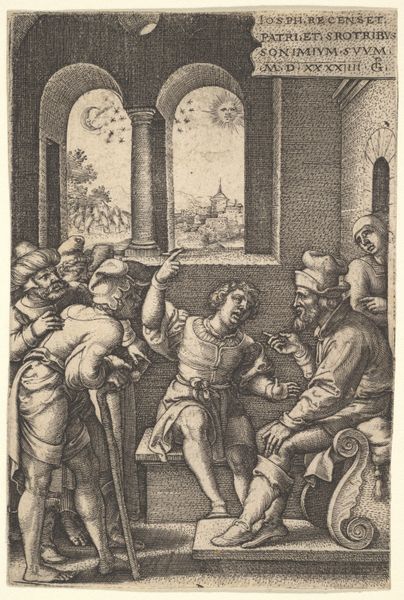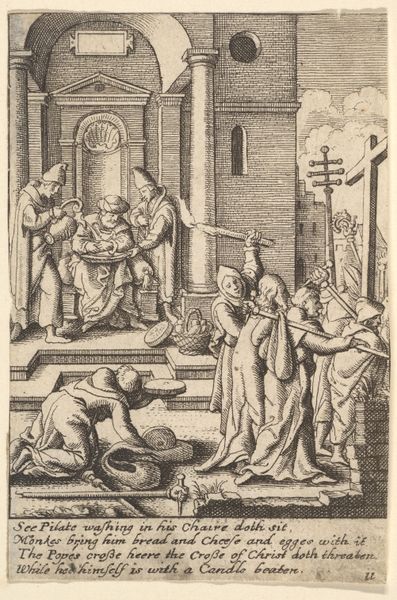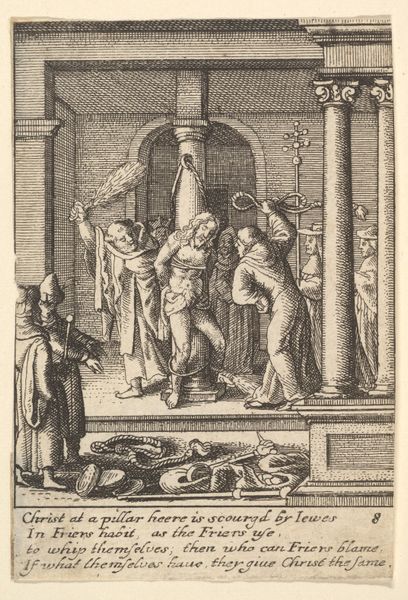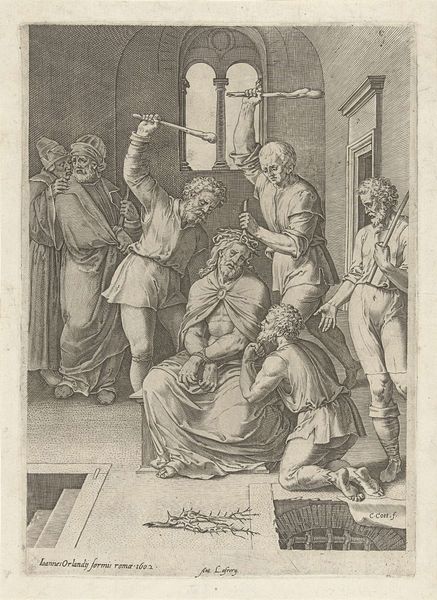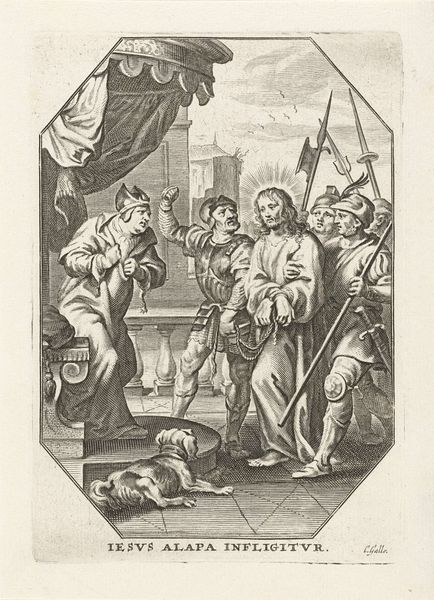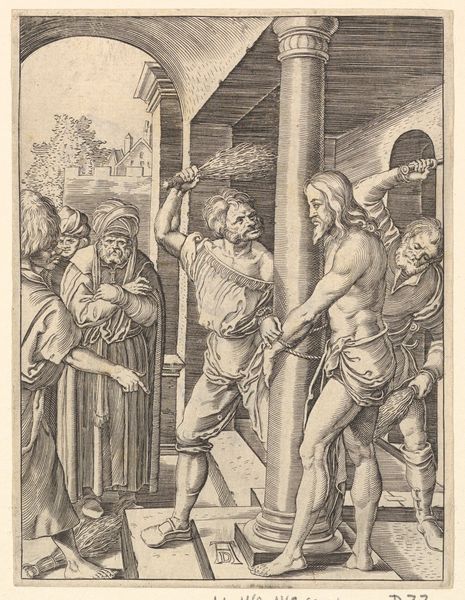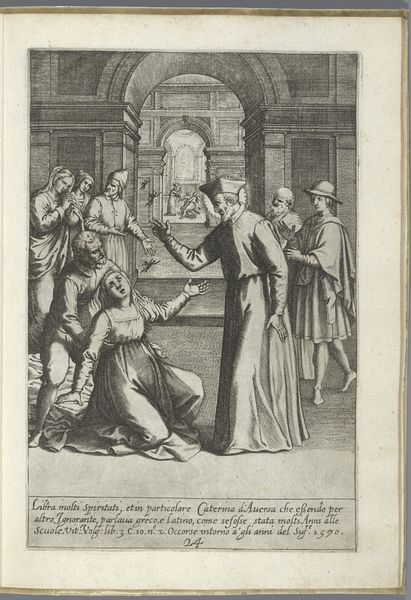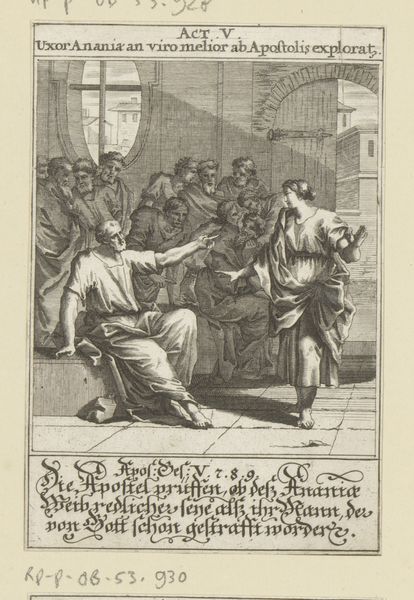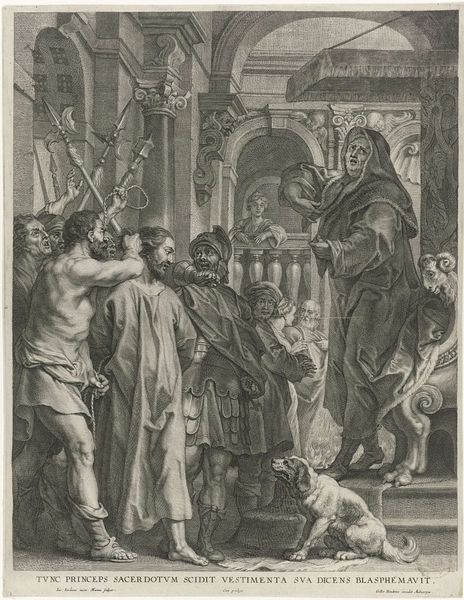
#
pencil drawn
#
comic strip sketch
#
light pencil work
#
pencil sketch
#
old engraving style
#
personal sketchbook
#
pen-ink sketch
#
sketchbook drawing
#
pencil work
#
sketchbook art
Dimensions: height 162 mm, width 115 mm
Copyright: Rijks Museum: Open Domain
Editor: This is "The Return of the Prodigal Son" by Abraham de Bruyn, from 1583. It's a pencil drawing, currently held at the Rijksmuseum. It feels so carefully staged, like a theatrical production frozen in a single moment. What symbols jump out at you in this work? Curator: Well, consider the archway on the left, where preparations for a feast are underway; within it is a butchered animal ready to be cooked and served, signaling abundance. This starkly contrasts the kneeling son, gaunt and tattered. His bare feet tell a story of a journey endured, of hardships faced and lessons learned. How do these contrasting images inform our understanding of the narrative's core? Editor: I guess they highlight the difference between the life the son abandoned and the forgiveness he's now receiving. Curator: Precisely! Think about the father’s embrace too. His open arms are almost…iconographic in their welcoming gesture. It speaks to a deeper theological concept, wouldn't you agree? What kind of archetypal narrative does that trigger for you? Editor: It feels very much like unconditional love and forgiveness, things larger than just this one story. Curator: And it resonates through time. Consider how many artists since have grappled with this parable, drawn to its enduring human drama. The clothing being offered to the son by the figure on the right also symbolizes restored dignity, covering his past shame. What about the overall composition? Editor: It’s interesting how everyone's gaze is directed toward the two figures in the center, creating a sense of drama. Curator: Exactly! The architecture frames the moment perfectly. The scene isn’t merely observed, it’s witnessed. It transforms this moment into something universally recognizable about families and repentance. It still affects viewers centuries later. Editor: This piece is definitely more complex than I initially thought. I will need some more time to process this symbolism, Curator: Indeed, the layers of meaning reveal themselves slowly with contemplation. We all can.
Comments
No comments
Be the first to comment and join the conversation on the ultimate creative platform.
